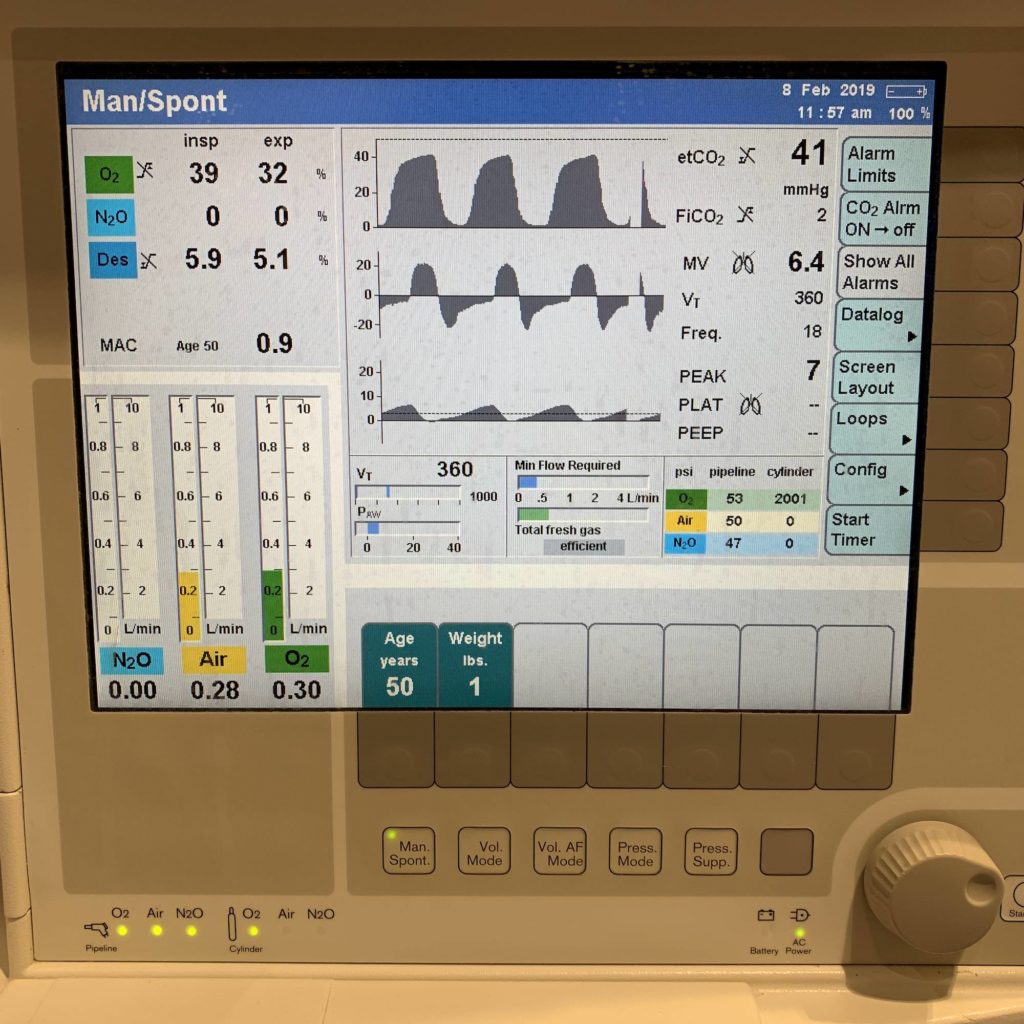Whenever I’m administering a general anesthetic utilizing inhalational agents with the intention of extubating my patient at the end of the case, I almost always use a low fresh gas flow (FGF) technique with desflurane.
Low FGF (< 1 liter/minute) techniques offer several advantages in a closed circuit anesthetic. Desflurane is more expensive than its halogenated volatile anesthetic counterparts, sevoflurane and isoflurane, so a low FGF can translate to cost savings! Furthermore, since less volatile anesthetic is consumed, less is emitted – an important consideration since these agents are ozone-depleting greenhouse gases. Finally, at lower flow rates, it’s easier to preserve physiologic parameters like humidity and body temperature.
When the aforementioned advantages are combined with a “quick on, quick off” gas like desflurane, emergence from anesthesia tends to be relatively fast and clean!
Here’s an example of an LMA anesthetic I’ve done using a low-flow technique (~ 0.6 liters/minute) in a patient breathing spontaneously through the supraglottic device. Yes, I changed the patient’s age and weight. 😉

Drop me a comment with questions! 🙂





